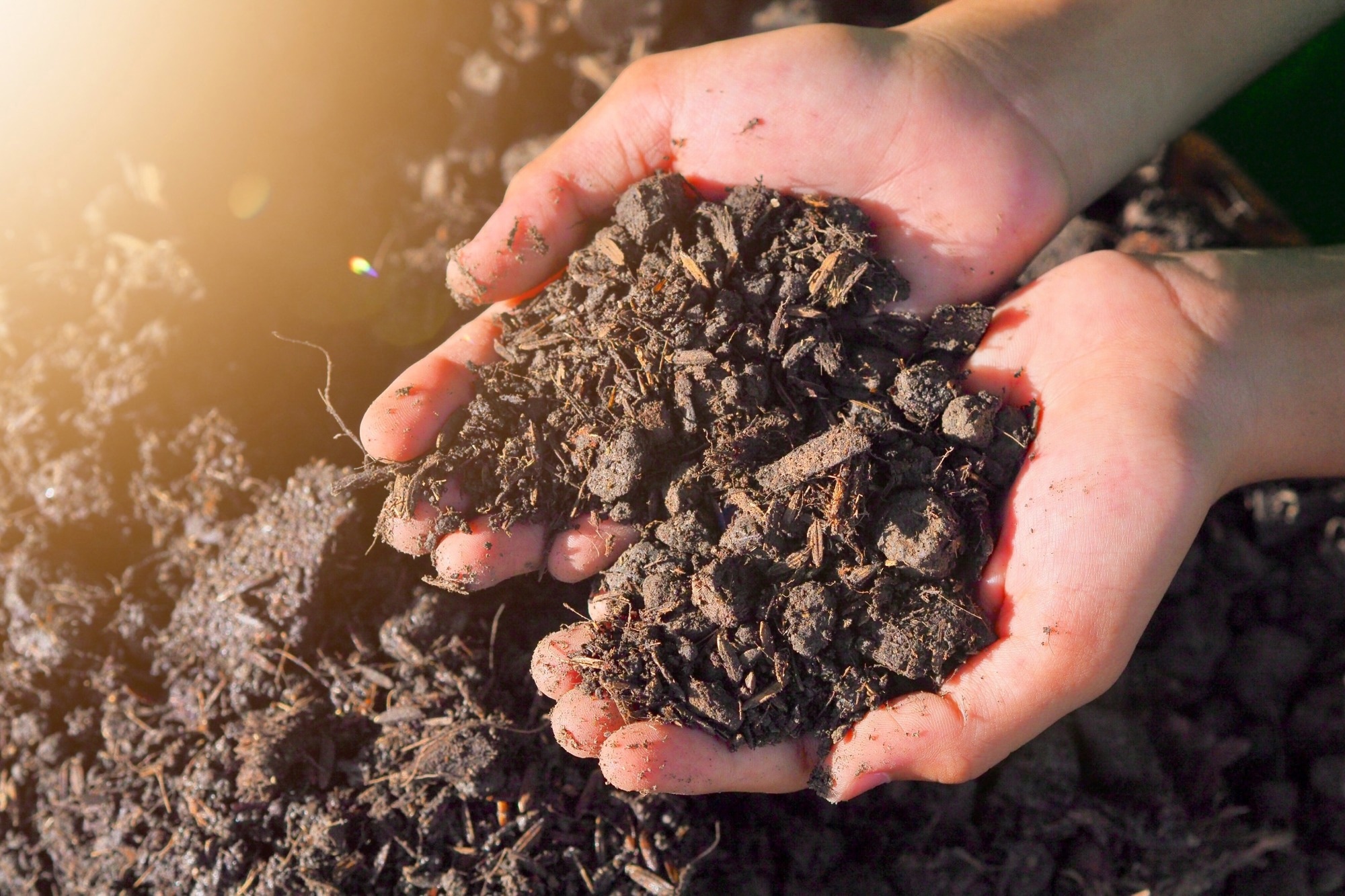AZoM sat down with two experts from LECO Corporation at the forefront of this soil analysis revolution. They explained how new testing methods are helping farmers improve yields, supporting researchers in addressing climate change, and enabling governments to better monitor carbon sequestration efforts.
Why are carbon and nitrogen so critical to soil health?
Jeff: That's a great question that gets to the heart of sustainable and regenerative agriculture. Carbon and nitrogen can be considered the lifeblood of healthy soil ecosystems. I often describe them as the dynamic duo of soil vitality.
Let’s start with carbon. In regenerative agriculture, soil carbon is considered a nutrient source and a cornerstone of ecosystem resilience. It originates from decomposed plant and animal matter - what we call organic matter - and plays a multifaceted role. Carbon improves soil structure, enhances water retention, and fuels microbial life. These microbes are essential for nutrient cycling, and their activity helps release nutrients slowly and naturally, reducing the need for synthetic inputs. Furthermore, soil carbon also acts as a “carbon sink”, helping to sequester atmospheric CO2.
Caeden: Then there's nitrogen, which I like to think of as the engine driving plant growth. It's fundamental for building amino acids, proteins, and chlorophyll - the very components that fuel photosynthesis and plant development. In regenerative systems, managing nitrogen efficiently is crucial. Practices like cover cropping, composting, and microbial partnerships optimize natural nitrogen cycles and can replace reliance on synthetic fertilizers. This not only boosts crop yields but also protects waterways from runoff and supports long-term soil fertility.
Together, carbon and nitrogen form a synergistic relationship that underpins soil health, plant productivity, and environmental stewardship. When managed thoughtfully, they enable us to grow food in a way that regenerates the land rather than depleting it.

Image Credit: TANAPAT KEK.JIW/Shutterstock.com
What exactly is Total Organic Carbon (TOC), and why has it become such a hot topic in agriculture?
Caeden: TOC is one of the most important indicators for soil health, especially in the context of sustainability and regenerative agriculture. It can be described as a snapshot of the soil's biological richness. It measures the carbon content derived from organic sources like decomposed plant material, crop residues, and long-standing humus.
In regenerative systems, we’re not just growing crops, we’re rebuilding rich soil. TOC helps us track that progress. Higher TOC levels mean better water retention, stronger root systems, and more active microbial communities. These are the building blocks of a self-sustaining agricultural system that can thrive without heavy reliance on synthetic inputs.
Jeff: What’s also exciting is the innovation in measuring TOC. The European Union has pioneered new standardized methods such as EN 17505:2023 and ISO 17505:2025, which use temperature differentiation instead of traditional acid digestion. Instead of relying on hazardous acids or repeated treatment and drying cycles, these new methods offer a streamlined approach. By eliminating chemical handling and minimizing sample preparation, they provide safer, more efficient analyses - delivering reliable results without requiring multiple steps.
For example, what used to take days can now be done in under 30 minutes, and that’s a game-changer for research, field trials, and soil monitoring programs.
Ultimately, TOC is more than a lab metric; it reflects how well we steward the land. It gives us a tangible way to measure the impact of regenerative practices and helps guide decisions that support long-term soil health and ecological balance.
Can you walk us through the two main approaches to TOC analysis?
Jeff: The traditional acid treatment method involves adding hydrochloric acid or sulfurous acid to soil samples to dissolve carbonates, the inorganic carbon compounds. What remains after acid treatment is organic carbon and residual oxidizable carbon, such as graphite, which we then combust and measure.
This approach has been the gold standard for decades. It's reliable, works with a variety of instruments such as the LECO C832 and CN928, and requires minimal specialized training. However, it does involve handling hazardous acids and requires 1-2 days of sample preparation time involving repeated treatment and drying cycles.
Caeden: Temperature differentiation is a game-changer. Instead of chemicals, we use precisely controlled heating using an instrument such as the LECO RC612. Different carbon compounds break down at different temperatures - organic compounds typically decompose at 200-400 °C, residual oxidizable carbon from 400-600 °C, and carbonates decompose around 600-900 °C. However, there's an overlap that requires careful interpretation.
The beauty of this method is that it gives you a complete carbon profile: Total Organic Carbon (TOC), Residual Oxidizable Carbon (ROC) , and Total Inorganic Carbon (TIC) all in a single analysis. Plus, there's no sample prep beyond drying; you literally put soil in the instrument and get results within 30 minutes.
Method Comparison at a Glance
Source: LECO Corporation
| Aspect |
Acid Treatment |
Temperature Differentiation |
| Prep Time |
1-2 days |
Drying only (1 hour) |
| Analysis Time |
90 seconds |
30 minutes (optimizing to 3 min) |
| Results Provided |
TOC |
TOC, ROC, TIC |
| Chemical Hazards |
HCl with halogen scrubbing
agents or H2SO3 required |
None |
| Regulatory Standards |
ASTM, EPA, ISO 10694 |
ISO 17505:2025 |
Technical note: Temperature differentiation exploits the distinct thermal decomposition profiles of organic, residual oxidizable, and inorganic carbon compounds, typically using stepped heating from 200 °C to 900 °C under controlled atmospheric conditions.
How do you choose between hydrochloric acid and sulfurous acid for labs still using acid treatment?
Jeff: It comes down to balancing efficiency versus equipment longevity. Hydrochloric acid is more aggressive - it removes carbonates faster and more efficiently, often requiring fewer treatment cycles. However, the chlorine anion from the acid treatment remains in the sample bound as a salt, which, when combusted, is corrosive to instrument components and requires specialized halogen traps for removal.
Sulfurous acid is less corrosive on the instrument. As a weaker acid, it takes more treatment cycles but doesn't require halogen trapping systems.
Can a single instrument measure both carbon and nitrogen in a soil sample, and what is the advantage of using one that does?
Jeff: Yes, one instrument can provide both carbon and nitrogen analysis in a soil sample. The LECO Carbon and Nitrogen models, such as CN928, are specifically designed to deliver precise measurements of total carbon and nitrogen using a single, integrated system. It features a reagent-free furnace and a thermoelectric cooler, eliminating the need for anhydrone and simplifying moisture removal in the sample combustion gas. Its advanced gas handling system also extends the life of nitrogen-specific reagents, making the process more cost-effective and environmentally friendly. These innovations support efficient, high-throughput, and accurate analyses. This makes the instrument especially valuable for regenerative agriculture, where understanding soil nutrient dynamics is key to improving long-term soil health.
What makes LECO's approach to soil analysis different?
Caeden: We're not just following methodological trends - we're actively shaping them. Our Technical Services Lab works directly with soil scientists to optimize these new temperature differentiation methods using the LECO RC612. We're currently focused on reducing that 30-minute analysis time to three minutes without sacrificing accuracy.
Jeff: The key is our combustion technology. We've spent decades perfecting high-temperature combustion systems for everything from steel analysis to food testing. That expertise translates directly to soil analysis, giving us precise control over temperature ramping, atmospheric conditions, and detection sensitivity.
We’re also solving everyday lab challenges. Our non-porous combustion boats prevent sample loss during transfer and streamline workflows - small improvements significantly reducing analytical errors common in traditional acid treatment methods.

Image Credit: Sanya Kushak/Shutterstock.com
What's next for soil analysis?
Jeff: The future is about scaling up throughput and ensuring reliability in high-demand lab environments. The CN928 and C832 combustion analyzers support a 100-position autoloader, allowing laboratories to process up to 100 soil samples per batch with true unattended operation. This high-capacity autoloading capability dramatically boosts sample throughput and efficiency, making it possible to meet the demands of high-volume testing environments while freeing up lab personnel for other tasks.
The CN928 delivers rapid carbon and nitrogen analysis, while the C832 specializes in carbon analysis with two-minute analysis times. These instruments enable reliable, high-throughput workflows that advance modern soil science.
We are also working on optimizing the temperature differentiation method for TOC analysis on the RC612 to cut analysis time from 30 minutes to just three minutes. Laboratories can achieve dramatically higher sample throughput without compromising accuracy. This acceleration enables rapid decision-making and allows researchers and producers to process substantially more samples in less time, supporting the demands of high-volume applications in modern soil science.
These developments reduce manual labor and increase return on investment for agricultural and environmental laboratories that work with heterogeneous or high-ash samples.
Caeden: When it comes to reliability, both the C832 and CN928 analyzers feature a reagent-free furnace design with a pure oxygen environment, ensuring complete and efficient combustion. For carbon and nitrogen analysis, the CN928 stands out with its advanced thermoelectric cooler for effective moisture and acid removal from the combustion gas, as well as extended reagent lifetimes - some components last over 4,000 samples before needing replacement, minimizing downtime and maximizing throughput.
On the other hand, the C832 utilizes an anhydrone reagent specifically for moisture removal in the combustion gas stream for carbon-only analysis in soils. Its reagent tubes are easily accessible, allowing quick and simple replenishment cycles to keep the instrument running smoothly with minimal interruption. Maintenance is straightforward thanks to the user-friendly design, and the intuitive software platform further supports secure data handling and remote monitoring capabilities.
Together, these innovations are transforming soil analysis from a manual, batch-limited process into a high-throughput, automated workflow that delivers consistent, accurate results with minimal downtime.
In summary, how does this technological shift empower farmers to make smarter, more sustainable input decisions?
Soil analysis sits at the crossroads of food security, climate resilience, and agricultural innovation.
The transition from traditional wet chemistry to advanced temperature differentiation methods, including using acid-pretreated sample workflows with combustion instruments, marks a pivotal technological shift and our practical ability to support regenerative agriculture. By enabling high-throughput, reliable analysis of carbon and nitrogen in soil, these techniques empower producers and researchers alike to adopt land stewardship practices that restore soil health and promote long-term sustainability.
For farmers, precise soil carbon and nitrogen measurement enables smarter input management, improved yields, and deeper alignment with regenerative agriculture practices that rebuild soil health and biodiversity. For researchers, it opens new pathways to understanding soil ecosystem dynamics and supporting climate-adaptive farming. For society, it means more resilient food systems and measurable progress toward sustainable land use.
About the Interviewees

Jeffery Gast brings over 14 years of experience as Lead Analytical Chemist and Quality Manager at LECO's Technical Services Laboratory. With a Chemistry degree from Ferris State University, Jeff has witnessed firsthand the evolution of soil analysis from labor-intensive processes to today's streamlined methods.

Caeden Hunter represents the new generation of soil scientists. As an Analytical Chemist at LECO with a Biochemistry and Molecular Biology degree from Michigan State University, Caeden brings fresh perspectives to age-old agricultural challenges.
About LECO
Founded in 1936, LECO Corporation manufactures precision analytical instruments used in laboratories worldwide. Its equipment spans applications from metal analysis in automotive manufacturing to detecting flavor compounds in food science. LECO is pioneering methods in soil analysis that could reshape how we understand and manage agricultural lands globally.

This information has been sourced, reviewed and adapted from materials provided by LECO Corporation.
For more information on this source, please visit LECO Corporation.
Disclaimer: The views expressed here are those of the interviewee and do not necessarily represent the views of AZoM.com Limited (T/A) AZoNetwork, the owner and operator of this website. This disclaimer forms part of the Terms and Conditions of use of this website.